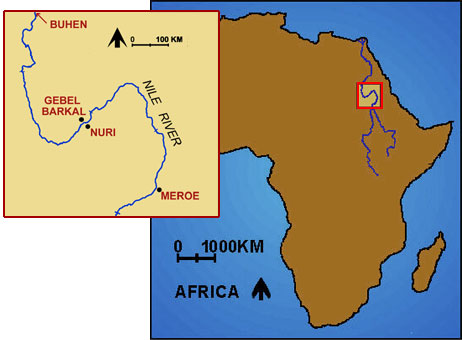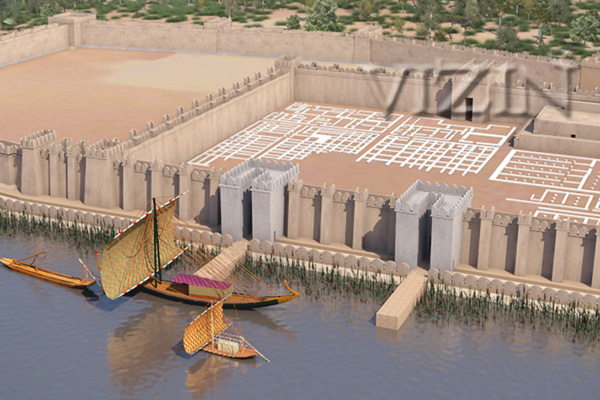Buhen Egypt |
The Latest in Military Technology
The ancient Egyptian Fortress at Buhen extended along the west bank of the Nile River for over 150m and incorporated the latest defensive technology that even Medieval military engineers would have envied:
|
click on image to enlarge
|
The military compound covered about 1.3 hectares and encompassed administration buildings, storehouses, and entire settlements. The Egyptians seemed to have occupied the inner city in a separate enclave bounded by the walls of the inner fortification, while mercenaries seemed to have lived just within the perimeter of the outer fortification walls. The military complex probably served as a customs and naval depot.
Keeping an Eye on Things
Buhen was the northernmost outpost in a series of at least eight brick and stone fortifications constructed during the 12th Dynasty along a 60km stretch southward from the second cataract. Each fortress was in visual contact with the immediately adjacent forts, which included the sites of Mirgissa, Shalfak, Uronarti, Askut, Dabenarti, and ending with the paired fortresses of Semna and Kumma, located on opposite sides of the Nile River from each other, marking a gateway into Egypt.
Accident or Attack
Buhen's gateways show evidence of fire dated around 1675 BCE, the period of the Hyksos occupation of Egypt, but the traces of burning and the damage could equally well have been accidental or an indication of attack. Contemporary with the Hyksos were the (so-called) Pan Grave People, a warrior group probably from Lower Nubia, who were possibly brought into the region as soldiers by the Egyptian Theban rulers of the 17th Dynasty, perhaps as a countermeasure against the Hyksos threat.It appears that throughout its life, the fortress remained nearly impregnable, despite numerous violent governmental changes. The basically defensive nature of the complex emphasized the mutual economic interdependence between Egypt and Nubia. It has been postulated that during periods of political instability, as during the Hyksos period, Egyptians stationed at the border forts had to put in long terms of military duty, to the point where the Egyptians became integrated into local Nubian culture, as indicated by evidence in contemporary graves. Thus, over a period of nearly 2000 years, the fortifications seem to have been occupied by a succession of different cultures (Egyptians, Kushites, and the Meroitic peoples) without the need for major reconstruction.
Now Submerged
The erection of the Aswan High Dam in 1964 has fully submerged Buhen, and all the other monuments along this stretch of the Nile River, under Lake Nasser.Reference
Page Created: October 5, 2004
Page Updated: August 16, 2010
URL:
Page Author: The Institute for the Visualization of History
